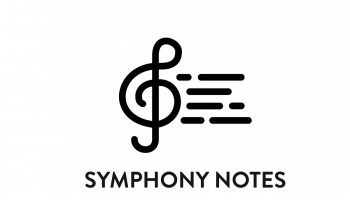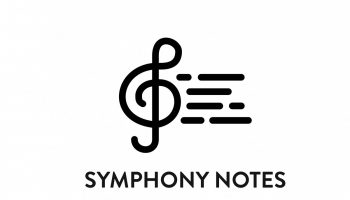Messa da Requiem
Giuseppe Verdi
Giuseppe Verdi was born on Oct. 9 or 10, 1813 (he was baptized on Oct. 11) in La Roncole, near Busseto, and died in Milan on Jan. 27, 1901. He was, without rival, the greatest composer of Italian opera in the late 19th century. Outside of his operatic repertoire, Verdi also contributed several important works to the choral repertoire, none more important than his setting of the liturgy of the Requiem Mass, dedicated to the memory of Alessandro Manzoni. The premiere of Verdi’s Messa da Requiem took place under the composer’s direction in the Church of San Marco in Milan on May 22, 1874. It is scored for four vocal soloists, SATB chorus, three flutes (piccolo), two oboes, two clarinets, four bassoons, four horns, four trumpets (plus four additional offstage trumpets), three trombones, tuba (originally ophicleide), timpani, bass drum and strings.
“I am profoundly saddened by the death of our great man! But I shall not come to Milan, for I would not have the heart to attend his funeral. I will come soon to visit his grave, alone and unseen, and perhaps (after further reflection, after having weighed my strength) to propose something to honor his memory.”
—Verdi to Giulio Ricordi, May 23, 1873
The context for our understanding of the genesis of Verdi’s Messa da Requiem has become lost in the passage of time. In order to regain the perspective that Verdi would want us to have, we must accept the notion of this composer as not only the creator of operatic masterpieces, but as a nationalistic patriot of the highest order. Patriotism in 19th-century Italy was synonymous with the political Risorgimento that ultimately resulted in a unified Italy in 1878.
There can be no mistake in linking Verdi with this movement, as even his name became the slogan for Italian autonomy — VIVA V.E.R.D.I.! (Long live Vittorio Emanuele, Re D’Italia!). The chorus of Hebrew slaves yearning for freedom and repatriation in Nabucco (“Va, pensiero”) was a symbol for the wishes of the Italian people, and the populace of Verdi’s day sang these melodies in the streets. Further resonances may be found in the operas Macbeth and Attila, especially from the latter in the famous line “Aural tu l’universo, resti l’Italia a me” (“You may have the universe, leave Italy to me”) — no matter that these words were spoken to the leader of the Huns by a traitor. The sense of the line was clearly understood by Italians in Verdi’s time as that of Italians speaking to Austrians.
But patriotism for Verdi was more than mere politics. It was cultural. The musical figure that represented Italian culture for many was Gioachino Rossini, whose death in 1868 moved Verdi to propose a Requiem Mass be composed in his memory, with modern Italian composers each contributing a movement. The project was doomed to failure, but not before Verdi himself composed a setting of the “Libera me.” It was in this way that the Messa da Requiem began. Indeed, Rossini himself had created some fine models for the composition of sacred music in his “Stabat Mater” and Petite Messe Solennelle. These works had certain influence on Verdi to be sure, but familiarity with the appropriate style for church music may be traced to his earliest musical experiences in Parma.
The event that elevated his “Libera me” from an isolated work to a full-fledged Requiem Mass of transcendent proportions was the death of another Italian cultural hero, Alessandro Manzoni, on May 22, 1873. Manzoni (born 1785) was the most important poet and novelist in 19th-century Italy, but whose name might nowadays be completely forgotten outside of Italy were it not for Verdi’s masterpiece written in his memory. The composer’s admiration for Manzoni as man and artist bordered on total adulation. Manzoni and Verdi met only once, in June of 1868, and Verdi’s sense of grief on the occasion of the death of the author of I Promessi Sposi was so profound that he could not bring himself to display it in public. He chose instead to visit his grave in the solitude of anonymity.
Verdi’s public form of mourning found its expression in his Messa da Requiem, proposing to the mayor of Milan that the work be performed there on the first anniversary of Manzoni’s death. The project was accepted, and the work’s premiere took place under Verdi’s direction in the Church of San Marco in Milan on May 22, 1874, exactly as the composer envisioned it. The female vocal soloists were the soprano and mezzo-soprano Teresa Stolz and Maria Waldmann, who created the roles of Aida and Amneris, respectively, in the Italian premiere of Aida. Three performances of the Requiem followed at Teatro alla Scala, with numerous subsequent performances elsewhere in the years that followed (most notably in Paris and London, the latter with revisions). Among its earliest admirers was Johannes Brahms, who chided the conductor and critic Hans von Bülow for his untoward remarks about it.
Much has been written about the operatic qualities of Verdi’s Messa da Requiem, as if its composer had been expected suddenly to alter his style for the sake of ecclesiastical propriety. Actually, a papal encyclical to that effect, Pope Paul X’s motu proprio, was issued two years after Verdi’s death. No matter. Verdi’s religiosity was highly personal and anyone familiar with the “Judgment Scene” from Aida knows how deeply he resented priestly authority. His resentment, however, did not extend to the church’s liturgy. The text of the Messa da Requiem is the standard one of the Roman Catholic Church, divided into seven “movements.” Certainly a text such as this one is filled with many opportunities for Verdian drama, and as Beethoven had shown a half-century earlier, even the ordinary of the Mass could be treated theatrically. A more direct influence on Verdi’s setting of the requiem liturgy came from Hector Berlioz’s spectacular setting composed in 1837.
I. “Requiem and Kyrie.” The work opens with hushed orchestra and chorus in the minor mode, brightening into the major at the reference to “Lux aeterna.” The major mode continues with new lyricism at the arrival at “Te decet hymnus.” After a repeat of the opening gestures, the vocal quartet introduces the “Kyrie,” joined soon after by the full choir.
II. “Dies Irae.” This is the most elaborate and complex section of the entire piece, the text of which ranges from the fearful wrath of the Day of Judgment (a dramatic section in G minor, punctuated by a bass drum whose head is to be made extremely tense and dry), to the sounding of the last trumpet (eight trumpets in this case, four in the orchestra and four “in the distance and invisible”), Jesus’ mercy and mankind’s mourning (“Lacrimosa,” one of the most moving tunes in the piece). Verdi takes each tercet of the text, giving its meaning in the most effective musical way.
III. “Offertorio.” This gentle movement in A-flat major calls for the solo quartet without chorus. Especially notable is the contrapuntal writing for “quam olim Abrahae,” as well as the beautiful melody of “Hostias et preces tibi.”
IV. “Sanctus.” This ancient liturgy of praise calls for double chorus and treats the text continuously as a brilliant double fugue of dance-like spirit.
V. “Agnus Dei.” Verdi’s treatment of this text is highly original and represents one of the masterstrokes of genius in the piece. It begins with the unaccompanied female soloists singing a 13-measure melody in C major in the bare octaves. The full chorus and orchestra respond in kind before the soloists take the tune into the minor mode. A further statement for the soloists, again in the major mode, introduces a magical counterpoint scored for three flutes that has been cited in many orchestration textbooks since its composition.
VI. “Lux aeterna.” This setting of the Communion text is a trio for mezzo-soprano, tenor and bass soloists. An ethereal effect is created by the tremolando divisi violins, reminiscent of Berlioz’s Grande Messe des Morts, as well as Wagner’s Lohengrin. Another fine use of orchestral timbre is the timpani roll in fifths, punctuated by chords in the bassoons, trombones, and tuba (originally ophicleide).
VII. “Libera me.” The prayer for deliverance from eternal death could hardly begin with a more dramatic stroke than Verdi’s decision to have the words declaimed as an unmeasured psalm tone by the unaccompanied soprano soloist. The chorus picks up the idea. The text continues with the dread thought of the world destroyed by fire, whose musical climax is answered by four bassoons, whose stuttering tones anticipate the soprano’s rendition of “Tremens factus sum ergo” (I am seized with trembling). As the voice dies away, the fury of No. 2 (“Dies irae”) returns one final time before it too yields to a reprise of No. 1 (“Requiem aeternam”). This paragraph ends with chorus and soprano (on a high B flat as softly as possible. Further echoes of Aida). The soprano again intones the “Libera me” as preparation for the final fugue, a movement that treats its subject with considerable contrapuntal sophistication. As the movement’s grave C minor softly yields to a C major conclusion, the piece ends dramatically with the soprano’s final desperate exhortation for deliverance from death in the same way it began — unmeasured recitative on middle C — twice answered by the exhausted chorus of humanity.
Musicologist David B. Levy is professor of music at Wake Forest University in Winston-Salem, North Carolina. He has also taught at the Eastman School of Music of the University of Rochester and the University of North Carolina School of the Arts. A Beethoven scholar, he founded the New Beethoven Research Group and has lectured widely throughout the United States and Europe. Levy will give a pre-concert lecture at 6:45 p.m. today in the Hurlbut Church sanctuary.





